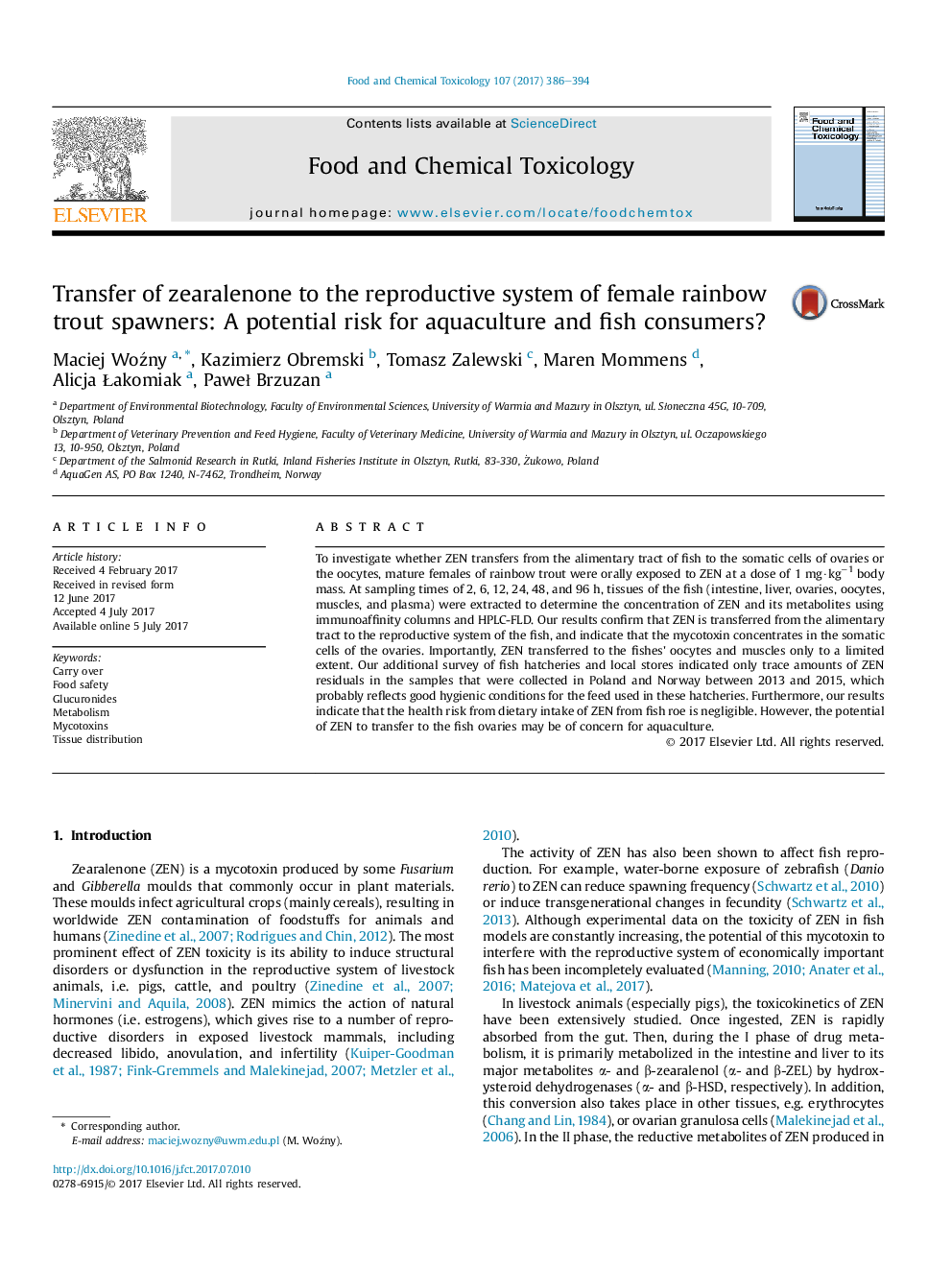| کد مقاله | کد نشریه | سال انتشار | مقاله انگلیسی | نسخه تمام متن |
|---|---|---|---|---|
| 5560089 | 1403308 | 2017 | 9 صفحه PDF | دانلود رایگان |
- ZEN is transferred from alimentary tract to somatic cells of mature trout ovaries.
- Only traces of ZEN were found in fish eggs and ovaries collected between 2013 and 2015.
- Contamination of fish roe with ZEN unlikely to pose a health risk to consumers.
- Potential of ZEN to transfer to fish ovaries may be of concern for aquaculture.
To investigate whether ZEN transfers from the alimentary tract of fish to the somatic cells of ovaries or the oocytes, mature females of rainbow trout were orally exposed to ZEN at a dose of 1 mg·kgâ1 body mass. At sampling times of 2, 6, 12, 24, 48, and 96 h, tissues of the fish (intestine, liver, ovaries, oocytes, muscles, and plasma) were extracted to determine the concentration of ZEN and its metabolites using immunoaffinity columns and HPLC-FLD. Our results confirm that ZEN is transferred from the alimentary tract to the reproductive system of the fish, and indicate that the mycotoxin concentrates in the somatic cells of the ovaries. Importantly, ZEN transferred to the fishes' oocytes and muscles only to a limited extent. Our additional survey of fish hatcheries and local stores indicated only trace amounts of ZEN residuals in the samples that were collected in Poland and Norway between 2013 and 2015, which probably reflects good hygienic conditions for the feed used in these hatcheries. Furthermore, our results indicate that the health risk from dietary intake of ZEN from fish roe is negligible. However, the potential of ZEN to transfer to the fish ovaries may be of concern for aquaculture.
Journal: Food and Chemical Toxicology - Volume 107, Part A, September 2017, Pages 386-394
